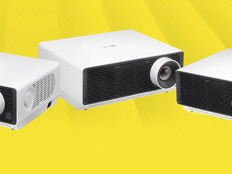Double Duty
Like many other public-sector agencies, the Oregon State Hospital has harnessed all-in-one computers to reduce maintenance and power requirements, conserve space and generally get more bang for the buck.
"We considered the kinds of laptops and desktops that have been our standÂard over the years," says Steve ÂSimmons, customer services support field manager in OSH's Office of Information Services, which to date has implemented about 50 Lenovo ThinkCentre A70z all-in-ones. "But we saw we had a need for devices that had a small footprint and are primarily going to be used for data entry into electronic health records. The devices [we had in mind] would get a lot of use, but not high-powered use."
In other words, the computers didn't need to support computation-intensive tasks such as spreadsheet number-crunching, so the hospital rolled out the all-in-ones to its charting rooms in January, Simmons says. Such rooms are situated on every floor of every site in the hospital system; staffers stop at them multiple times per day to record patient data, such as a person's emotional state or blood pressure reading, or how he or she reacted to an adjusted dose of medicine. Other all-in-ones are assigned to specific staff members.
All-in-one computers -- which meld a display, a keyboard and processing power into a single unit -- represent an alternative to traditional notebooks or desktops. Simmons had both space and budget constraints in mind when he and the rest of his team made the recommendation to purchase all-in-ones.
But there's another overarching reason behind the choice, Simmons says. As healthcare facilities digitize patient health records, any device with the potential to build the most accurate data picture possible of each patient bears close examination.
"The less convenient it is to quickly enter the data you need to enter, the less likely it is that a staff member will do it," he says. When that happens, "the next clinician who comes into contact with that patient [has] a less comprehensive record to rely on."
User Specific
While the Oregon State Hospital is focused on healthcare workers, the Montana State Library has an equally specific group of users it's seeking to support with its all-in-ones.
Donci Bardash, project director of the Broadband Technologies Opportunities Program at the library, notes that Montana's low population density makes broadband service to the home cost-prohibitive for consumers. Because of this, the MSL is using funds from the U.S. Department of Commerce and the Bill & Melinda Gates Foundation to upgrade and expand library computer centers statewide to improve patrons' ease of access to the web.
As part of its efforts to accommodate library patrons who have impaired visual perception or limited dexterity, in March the library deployed 13 HP TouchSmart all-in-ones with assistive technology–enhanced keyboards and mice and text-magnification software (height-adjustable desks were also part of the upgrade).
And with today's all-in-one PCs, buyers like the Montana State Library or the Oregon State Hospital no longer have to make the trade-off between features and price.
"You'll pay more for a notebook [than you would an all-in-one]," says Laura DiDio, principal of ITIC, an IT consulting firm. But today's all-in-ones sport notebook-like features such as multi-touch displays, cameras, retinal ID scans and superfast chips -- thus blurring the differences between the systems that were present even a few years ago, she adds.
Yet not every government entity will want every snazzy capability available in the latest crop of all-in-ones. For example, because of patient privacy considerations, the OSH team deliberately chose all-in-one units that did not include cameras.
Sparingly Sleek
Fewer moving parts means that some all-in-ones tolerate heavy use -- even abuse -- better than notebooks can. Case in point: the children and pre-teens hammering away on iMacs set up by the city of Largo, Fla., when it opened a new library six years ago.
Harold Schomaker, Largo's IT director, says the all-in-one computers were used in a homework center for youngsters working with tutors to complete assignments. Their hardiness was a selling point.
"When the public is touching it, you don't want a lot of components," says Schomaker.
"[The iMacs] sit high and they have a small base, and we worried that if [children] shook the desk enough, they could potentially fall over, so we actually bolted them to the desk."
The city has since moved to sell off surplus iMacs to the public, Schomaker explains, partly because the homework center has been phased out and partly because this particular batch of iMacs used Motorola processors rather than Intel chips. But all-in-ones are still in use by other city employees, including some in the marketing department who use the devices to lay out materials and for word processing.
76.9
billion
The number of apps expected to be downloaded in 2014 to PCs, TVs, smartphones, tablets and devices melding all of the above
Source: IDC
Schomaker points out that it's difficult to alter the units' hardware configuration. Yet when space is tight and purse strings tighter still, all-in-ones may be just what the doctor ordered.
The Oregon State Hospital deployed its first all-in-one units based not so much on job roles as on how the devices would be used, and where. The charting rooms are where much of each patient's electronic health record will take shape.
Considering that the technicians now using all-in-ones previously had jotted patient observations on paper, the new computers are a big step in creating a more secure, more thorough record of each patient's progress, to say nothing of a more affordable means of doing so.
"These devices are roughly $300 cheaper than a desktop, and for the majority of our people they provide equivalent functionality," he says.

Photo: Getty Images
Longer Life spans
All-in-one computers' durability tends to make them good choices for organizations that want to raise the life-expectancy ceiling for the devices they give their end users.
For its all-in-one machines and thin clients, the city of Largo, Fla., has one eye on the budget as it nudges devices' expected life spans upward. Harold Schomaker, the city's IT director, says the typical life expectancy assigned to such computers has been raised from three or four years to about six years. Their durability and relative lack of complexity compared with notebooks is such that they seldom need to be replaced before that period of time has passed.
The Montana State Library provided HP all-in-ones to some public libraries in the state's network, whose staff then assumed ownership and maintenance responsibilities, says Donci Bardash, project director of the library's Broadband Technologies Opportunities Program. "For the purposes of inventory, we gave all our computers [from HP, Apple and other manufacturers] a five-year life span, which aligns with the state's replacement cycle."






